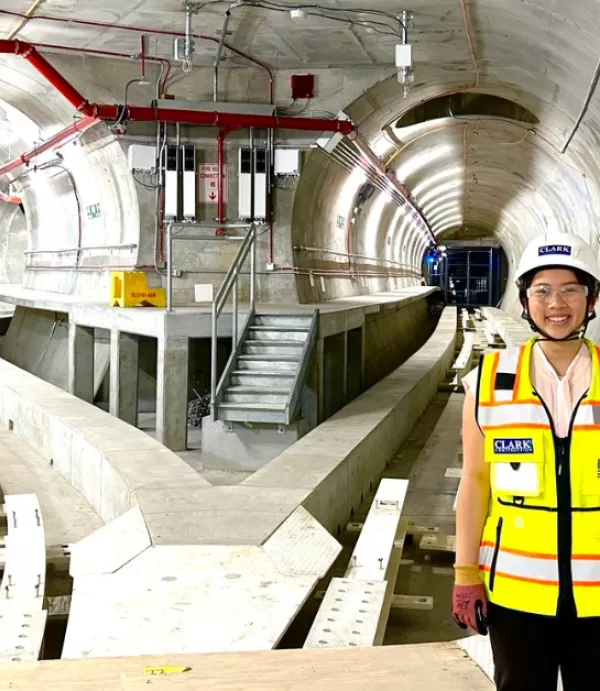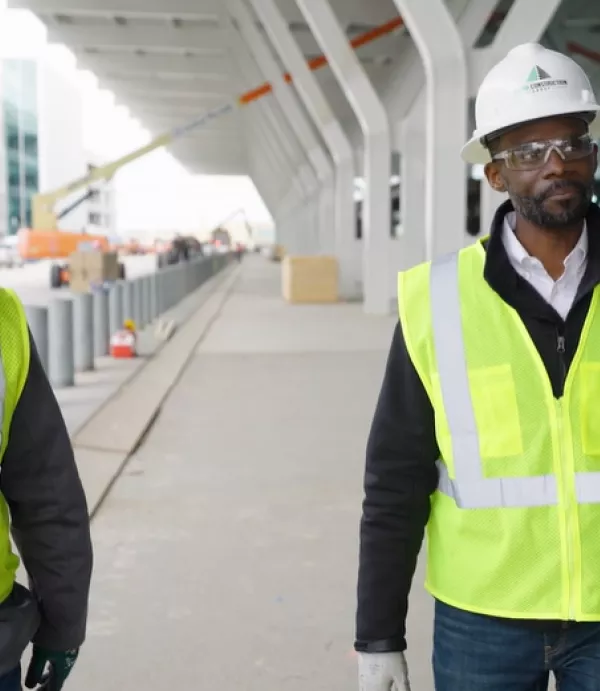From Drop-Off to Take-Off: Clark Builds a Better Travel Experience in Airports Nationwide
July 2, 2024

Airports play a critical role in the way our world functions and shape the way people experience it. Across the county, Clark is working with its aviation partners to build the infrastructure that improves efficiency and maximizes comfort and convenience for the travelers who take to the skies.
IAH: Making an Entrance
Image
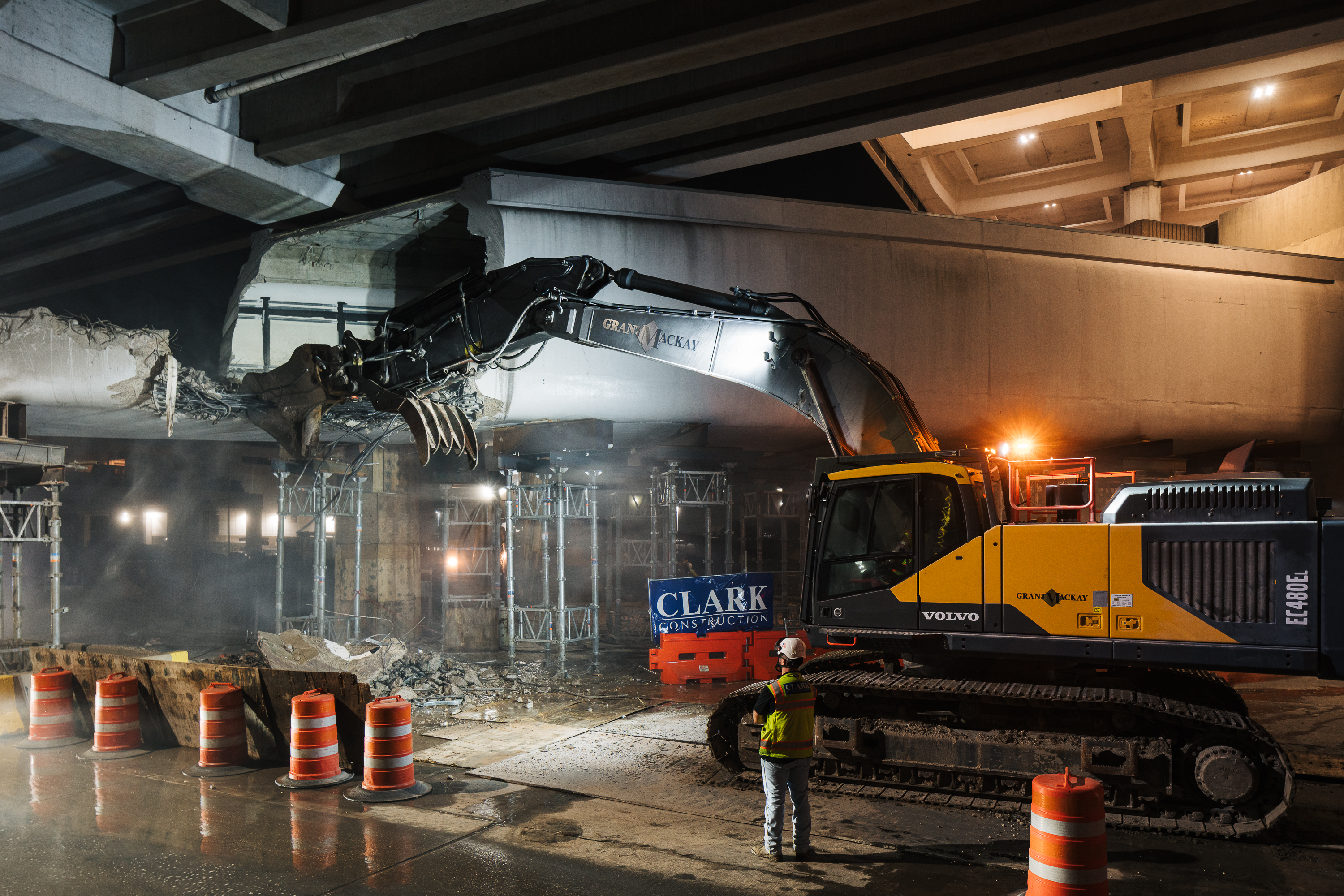
At George Bush Intercontinental Airport (IAH) in Houston, the 500,000-square-foot Central Processor project – part of the Terminal B Transformation program – reimagines the passenger experience of United Airlines customers with controlled demolition of large, complex structures.
Work at IAH kicked off this spring with the demolition of the pedestrian tube structures. The massive concrete tubes stood for decades as windowless pedestrian tunnels, ushering passengers from the original processor to their departing flight gates. Sandwiched between the ground-level North Terminal Road and the above-ground Skyway, the tubes passed within inches of the Skyway’s support columns, requiring selective and controlled demolition.
Balancing heavy machinery with exquisite care, crews completed the work in coordinated phases with United and Houston Airport Systems to maintain all airport operations. The removal of these tubes makes way for a streamlined and welcoming entrance to the future Terminal B gates.
ATL: Quietly Making an Impact
Image
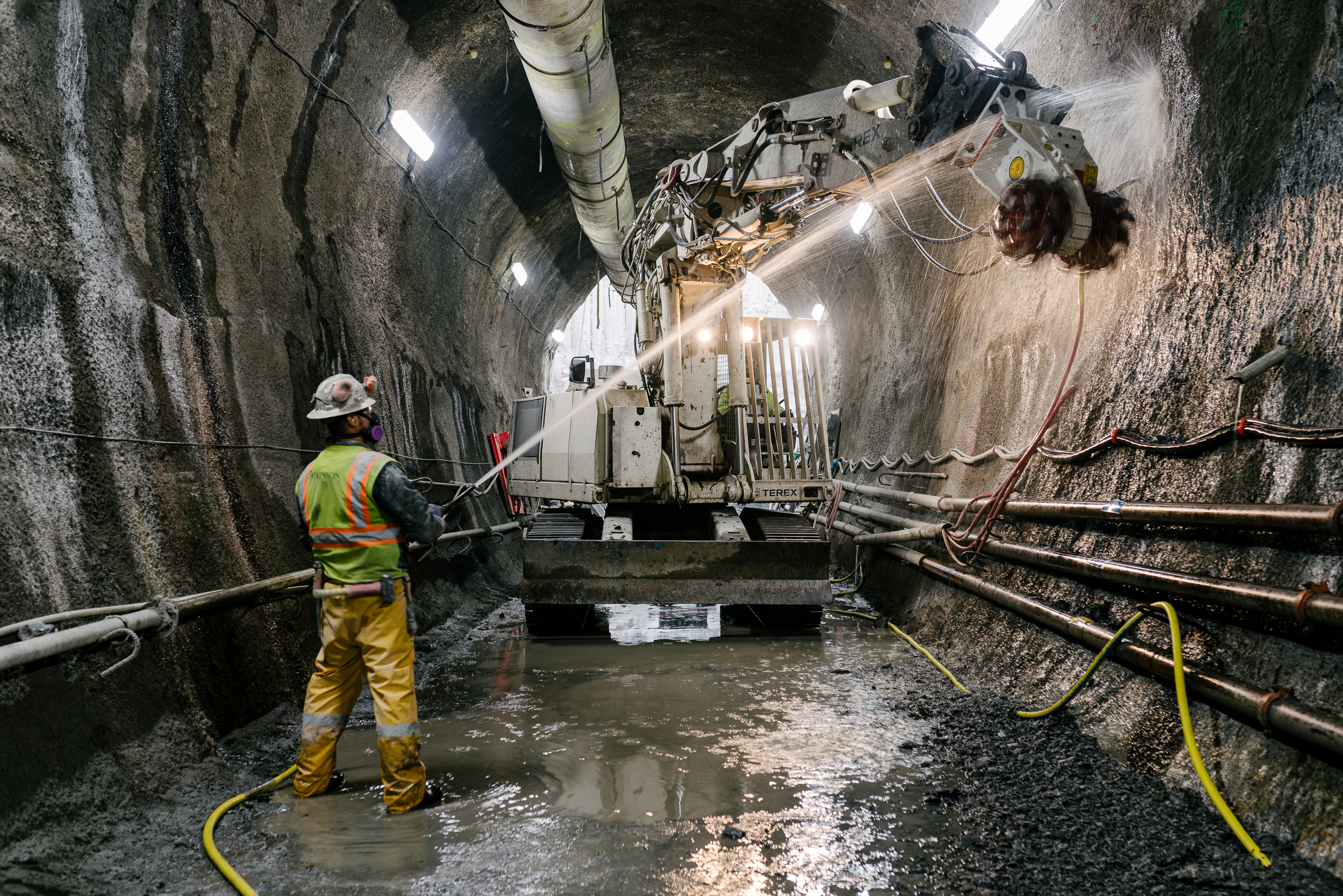
In Atlanta, the Clark/Atkinson/Technique joint venture team has worked tirelessly to forge the 700-foot tunnel extension at Hartsfield-Jackson Atlanta International Airport (ATL) for the Plane Train automated people mover (APM) system.
Running under the active domestic terminal, the project team used a sequential excavation method to mine the tunnels with a combination of excavators in the soft ground and drill-and-blast to mine through rock, without impacting the airport’s daily operations.
Over the course of 208 individual blast events, Atkinson used 45,000 pounds of explosives to carve the tunnel just five feet beneath the domestic terminal, and within three to five feet from the MARTA and SkyTrain foundations. To achieve this safely, protection of the adjacent structures was paramount. In addition to a real-time ground and building monitoring system, the tunnel's support consisted of piles, face dowels, rock bolts, lattice girders, shotcrete, and welded wire fabric. Consolidated decision making and streamlined critical path scopes were integral to achieving this heavy and complex work and promoted a seamless and uninterrupted experience for airport staff and passengers.
BWI: Keeping Operations Efficient
Image

In Maryland, the Baltimore/Washington International Thurgood Marshall Airport (BWI) A/B connector and Baggage Handling System project defines airport operational efficiency. Despite being the largest-ever terminal enhancement contract for the airport, systems run at full speed for Southwest Airlines, even while those systems run straight through the heart of the construction site.
Clark’s multi-phased construction approach for the A/B Connector project at BWI meticulously plans and sequences production to minimize disruption to airport operations. With the jobsite blocking the primary in-bound baggage handling system, multiple access tunnels were designed and constructed to provide safe and uninterrupted 24/7 access for Southwest’s luggage train drivers to travel through the active construction site. Vital for the airline’s operations, the entire jobsite was built around these temporary structures.
Once complete, the two-level addition between Concourses A and B will contain a new baggage handling system, expanded hold rooms, high-end finish restrooms, electrochromic glazing curtainwall, new passenger boarding bridges, and provide critical growth capacity for Southwest Airlines.
ORD: Combining Expansion and Efficiency
Image
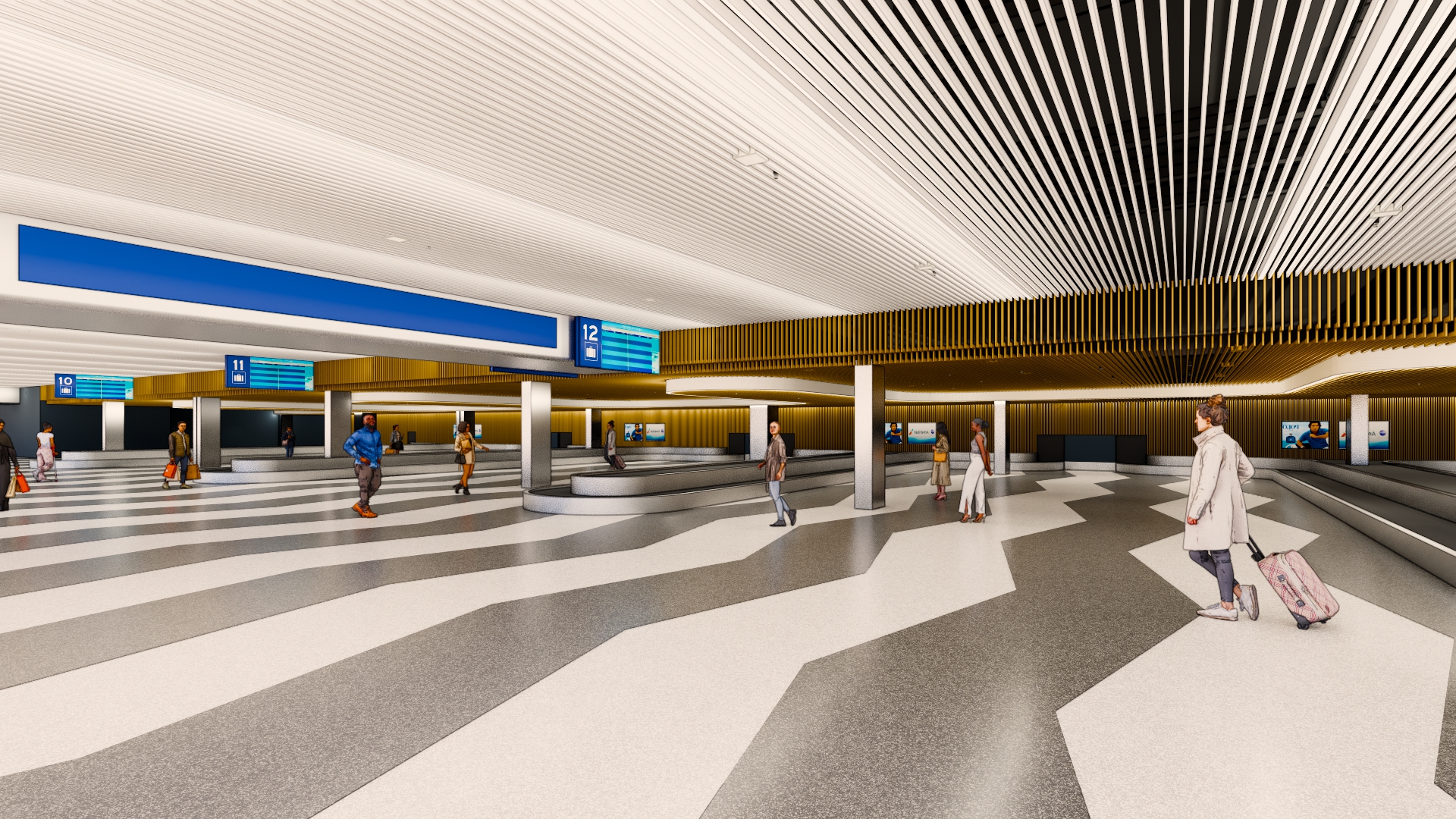
At Chicago O’Hare International Airport (ORD), passenger amenities and efficiency have a front seat on the Terminal 3 improvements project. The ElevateT3 initiative aims to improve air travel by expanding, demolishing, and reconfiguring its four concourses and 75 gates. As the airport’s largest terminal, the design of Terminal 3 calls for adding even more space for increased efficiency and comfort, including expanded corridors, new baggage claim areas, an advanced baggage handling system, 10,000 square feet of additional concession and amenity space, and an expanded single screening area for the Transportation Security Administration security checkpoint.
DCA: Raising the Bar for Amenities
Image
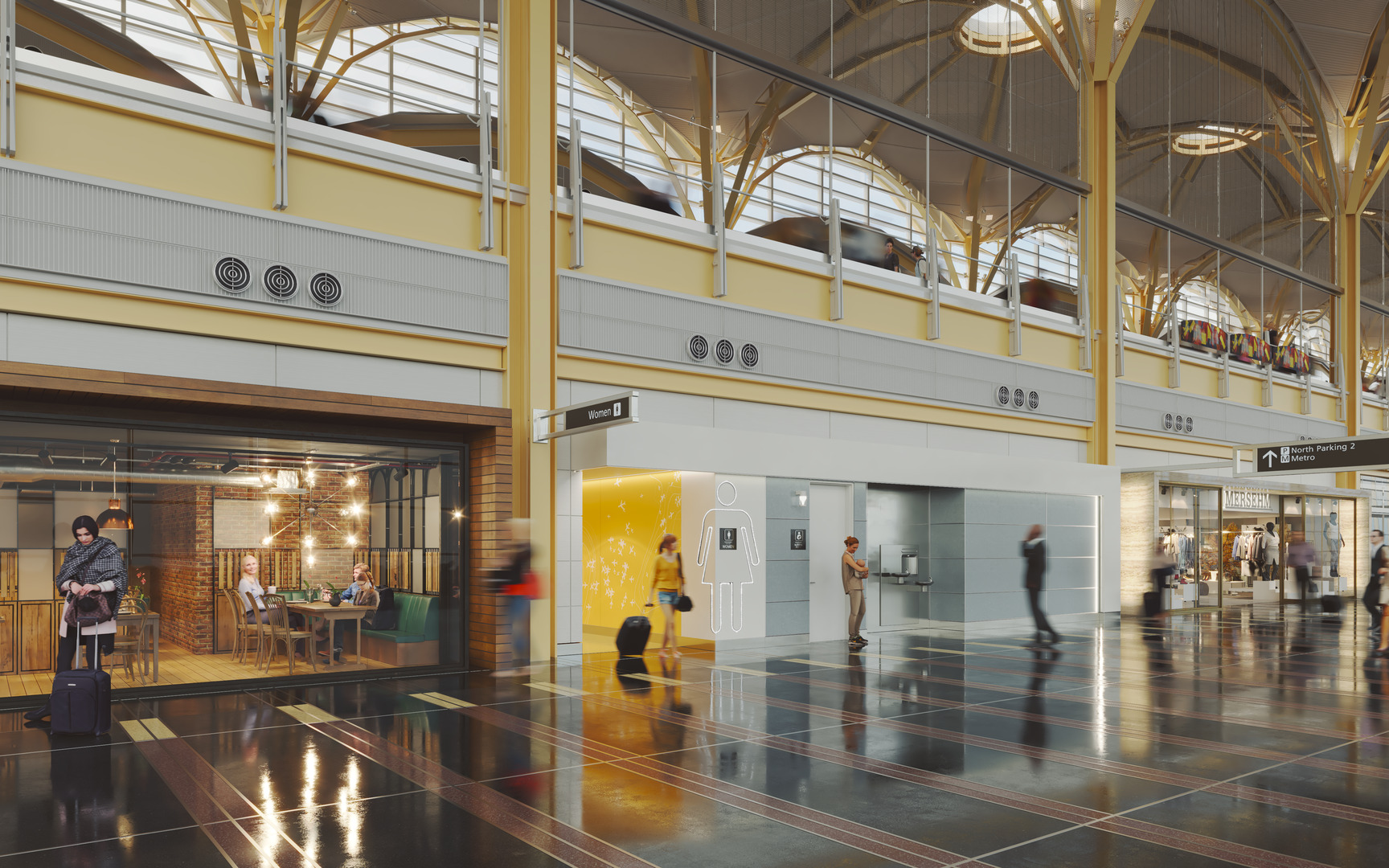
At the Ronald Reagan Washington National Airport (DCA) Terminal 2 Modernization project, crews are embarking on expanding and renovating 12 restrooms located throughout National Hall and concourses B, C, and D. Recognized as an essential component to airport customer satisfaction, the updated restrooms will feature expanded stall size, privacy features, and more inclusive facilities.
Design upgrades also feature the removal and replacement of carpet and furniture in the concourse hold rooms. This work will be done overnight between the last flight of the evening and first flight of the next day, requiring crews to remove only as much flooring as can be replaced in a single shift to maintain airport operations. Scheduled over three phases, these targeted improvements make a direct impact to the personal experience of travelers through DC.
These projects broaden Clark's portfolio of aviation expertise, showcasing the complexity of working within dynamic airport environments ranging from complex infrastructure to detailed finishes, and the ability of our teams to meet the demand of efficiency, safety, and passenger comfort.
